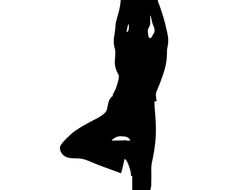Core muscles: A central force in your daily activites
Published: December 24, 2021
Collectively your core muscles are known as your core.
They stabilize the trunk of your body (shoulders to hips) and are involved in most full body dynamic movement as well as static positioning.
Your core also functions in internal physiological processes by exerting pressure within internal body cavities.
As you go about your daily activities your core muscles are actively working to maintain your posture and provide you with the ability to do your daily activities.
Whether you are standing at a counter preparing food, using a computer, participating in sports, walking, running, swimming, cycling, grocery shopping, or lifting and playing with children strong core muscles will make these activities easier and protect your joints.
Since some of your core muscles exert pressure on internal organs, core muscles that work efficiently can maintain healthy function in digestive and other essential internal processes.
Think about how often you reach forward, sideways, and turn, and about the activities you do that require your core to maintain stability so that you can perform those activites.
Static and dynamic core functionality
Your core stabilizes your thorax (rib cage and shoulders) and pelvis (hip bones) by aligning your spine, ribs and pelvis.
The alignment of your trunk changes to resist different forces applied to it.
Your core facilitates these changes in alignments which help you maintain your posture when static or dynamic force is applied to your body.
When a force applied to your body does not change static core functionality occurs.
When you sit at a computer your core stabilizes your axial skeleton (skull, spine, rib cage and tail bone).
The muscles in your shoulder, neck, arms, and hands can then function and enable you to use the key board efficiently.
Without static core functionality your axial skeleton would sway forward and back, side to side, and twist and turnan.
Your arms and hands would not be able to hold the position necessary for efficient key board use.
In addition, without static core functionality your head would move constantly and you would not be able to focus on the monitor.
Many of your dynamic full body movements originate...link to the full article to learn more about your core muscles.
References
1.
American Council on Exercise (1996). Personal Trainer Manual. San Diego, CA: American Council on Exercise
2.


